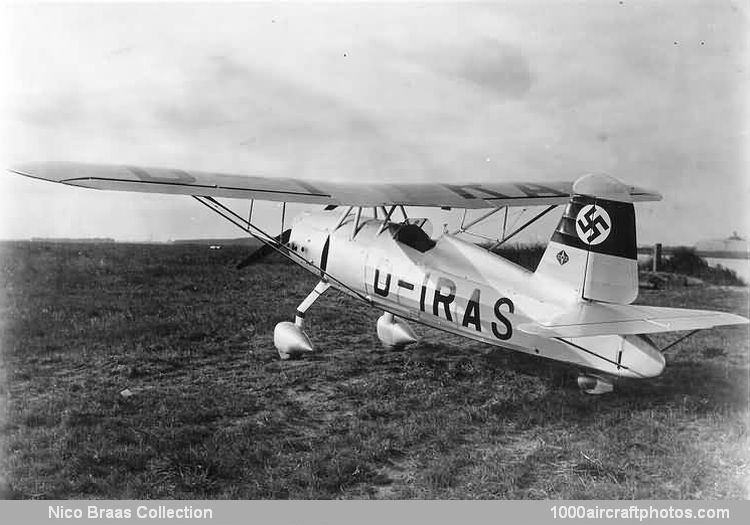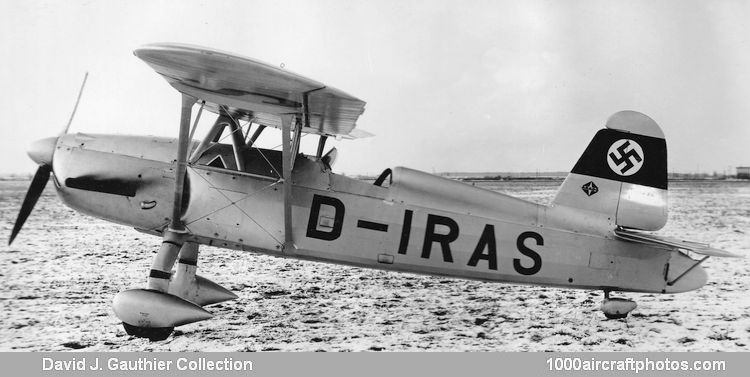09/30/2012. Remarks by Johan Visschedijk: "Among the earliest specifications drawn up by the C-Amt (technical department) of Göring's Luftfahrtkommissariat (aviation commissariat) was one calling for a lightweight single-seater for use as an emergency Heimatschutzjäger (home defense fighter). It had also to be suited for the role of advanced fighter trainer, and the importance attached to this specification by the Luftfahrtkommissariat may be gauged from the fact that no fewer than four aircraft manufacturers, Arado, Focke-Wulf, Heinkel and Henschel, were asked to submit proposals.
The Heimatschutzjäger idea was not novel in Germany, as the Reichswehrministerium (Ministry of Defense) had prepared a similar specification in the 1920s, and as now envisaged by the C-Amt, the aircraft was to be a high-wing monoplane designed around the Argus As 10C eight-cylinder inverted air-cooled V-engine, and capable of mounting either one or two 0.311 in (7.9 mm) MG 17 machine guns. The specification was later (in the autumn of 1934) to be amended to stipulate the twin-gun mounting plus the ability to carry three 22 lb (10 kg) bombs for the Heimatschutzjäger role, armament being restricted to one MG 17 for the fighter training role.
Arado's contribution to the program, the Ar 76 designed to the same strength factor as the Ar 67 and Ar 68 fighters, was a parasol monoplane with a simple tubular steel fuselage with wooden formers, light alloy skinning forward and along the upper decking, and fabric covering for the aft sides and under-side. The wings were of wooden construction with fabric covering and attached on each side to the fuselage mainframes by parallel bracing struts. Provision was made in the upper decking of the forward fuselage for two MG 17 machine guns, and a bay was provided immediately aft of the fireproof bulkhead to house a magazine containing three vertically-hung 22 lb (10 kg) bombs.
The first prototype, the Ar 76 V1 (D-ISEN c/n 363), was completed late in 1934, this being followed in the spring of 1935 by a second prototype, the Ar 76 V2 (D-IRAS). The Ar 76 V2, like the Ar 76 V3 (D-IBET c/n 365) completed shortly after the second prototype, differed from the Ar 76 V1, which had been lost in an accident at an early stage in the flight test program, in having some tail assembly modifications, these including the elimination of all dihedral on the horizontal surfaces.
The general characteristics of the Ar 76 were adjudged excellent, but in the final evaluation of the contending designs, the Arado competitor was placed second to the Focke-Wulf Fw 56 Stösser. Nevertheless, the type was ordered as a back-up for the Fw 56 program, and 190 Ar 76 As were delivered to the Luftwaffe in 1935-1936, these were used by the Jagdfliegerschulen (fighter pilot schools). As a result of some minor structural strengthening and certain equipment changes, the empty and loaded weights of the Ar 76 A were increased over those of the Ar 7V2 and Ar 7V3, these increases being accompanied by a small reduction in performance."

